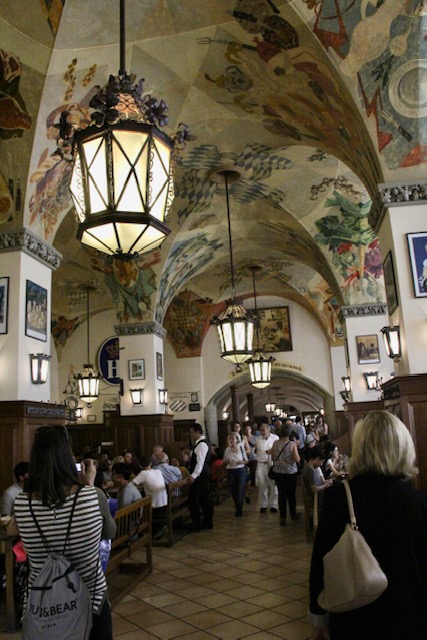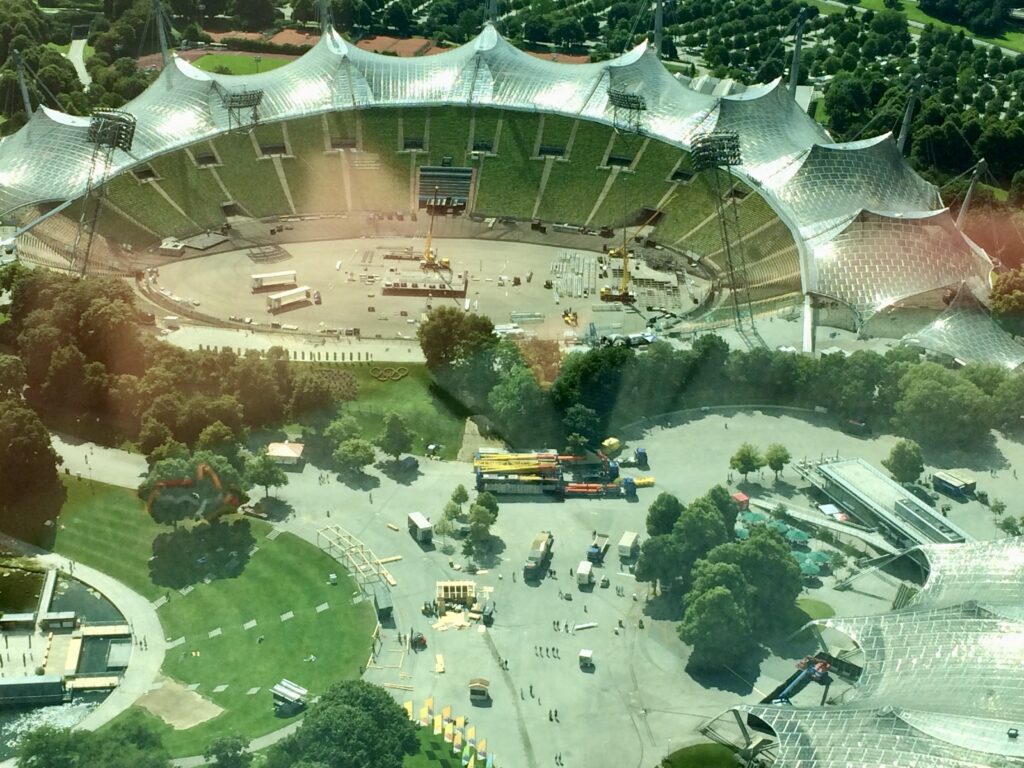We continued on to Munich after spending a few hours exploring Rothenburg. We reached Munich late evening. We spent 2 days in Munich :
- Munich site seeing – Most of the sites in Munich are within walking distance to each other, except the Olympic park and BMW Museum/Welt. The Olympic Park and BMW Museum/Welt are in the same complex, 8km from Munich city center.
- Neuschwanstein castle, Linderhof castle, and the town of Oberammergau – Viator guided day trip
Marienplatz – This has been Munich’s central square since the founding of the city. You will find the massive Neues Rathaus (New town hall) occupying one side of the square and the Altes Rathaus (Old Town Hall) on the other side. In the large open square are the Mariensäule, a tall column to the Virgin Mary erected in 1638, and the Fischbrunnen, a newer fountain that includes bronze figures rescued from an earlier 19th-century fountain. The plaza is also surrounded by stores, boutiques, and restaurants.




Hofbrauhaus am Platz – The Hofbräuhaus in Munich is one of the most famous Bavarian restaurants and breweries in Europe. It was originally built in 1589, remodeled in 1897, destroyed during World War II and rebuilt in 1958. The building can sit up to 3000 visitors, with another 400 guests outside in the beer garden. On peak days, about 30,000 visitors are expected.



Munich Residenz – The vast Residenz is the former royal palace of the Wittelsbach monarchs of Bavaria. The Residenz is the largest city palace in Germany and is open to visitors for its architecture, room decorations, and displays from the former royal collections. The complex contains ten courtyards and displays in 130 rooms.


Treasury – The display of jewels, goldsmith’s work, enamels, crystal objects and ivories in the Treasury of the Munich Residence is the result of centuries of avid collecting by the rulers of Bavaria.







Frauenkirche – Admission is free to this cathedral church of our lady. Completed in 1488, its massive twin 100m tall towers are visible all over the city.



Olympiapark – Home to the 1972 Summer Olympics, Munich’s spectacular Olympic Park covers an area of some 2.7 million square meters. It is now a major recreational center hosting a variety of major concerts and events. There are tours available showcasing the facility’s splendid architecture and design. We did a self tour which included a visit to the top of the Olympic Tower, a 290-meter-high television tower built in 1968 that was renamed in honor of the games. It has a viewing platforms with breathtaking views over the city. You have to pay to see both the Olympic Park/Stadium as well as the Tower.




BMW Museum and BMW Welt – This is across from the Olympic park. You can plan to visit both these places in a morning or afternoon trip. BMW Welt is free, you have to pay to visit BMW Museum. The BMW Museum is the company museum of the history of BMW (Bayerische Motoren Werke), founded in Munich, near the Olympiapark, in 1972, shortly after the Summer Olympics. The museum tells the story of the German car manufacturer, showcases the history of the BMW company, the historical evolution of the brand’s skills and innovative forces, together with its sporting achievements and successes.



Not to be confused with the BMW Museum (above), although it’s on the same huge manufacturing complex near the Olympic Park, BMW Welt is a gigantic showroom. Here, you can see every vehicle the company makes, sit inside them, and learn what the future cars and motorcycles may look like.


Other attractions around Munich which we had to give a miss due to time constraints :
- The English garden – Largest city park in Germany. 910 acres, 100 bridges.
- Cuvillies Theater – Built in 1755, it is the finest example of a Rococo theater with tiered boxes in Germany. The auditorium is stunning and you can visit the theater separately with a ticket.
- Deutsches Museum – World’s largest museum of technology. It has more that 15,000 artifacts that range from early astronomical instruments to the latest science on global warming.
- St. Peter’s Church (Peterskirche) – Munich’s oldest parish church and and built in Gothic style in 1386, the church was altered with the addition of a Baroque choir with three apses in 1636, while the tower was given a lantern dome in place of its earlier Gothic spires. You can also climb the 300-step tower to get a panoramic view of the surrounding.
- Asamkirche (Asam Church), Michaelskirche (St. Michael’s Church), The Theatine Church of St. Cajetan are a few other churches that may be interesting to visit.